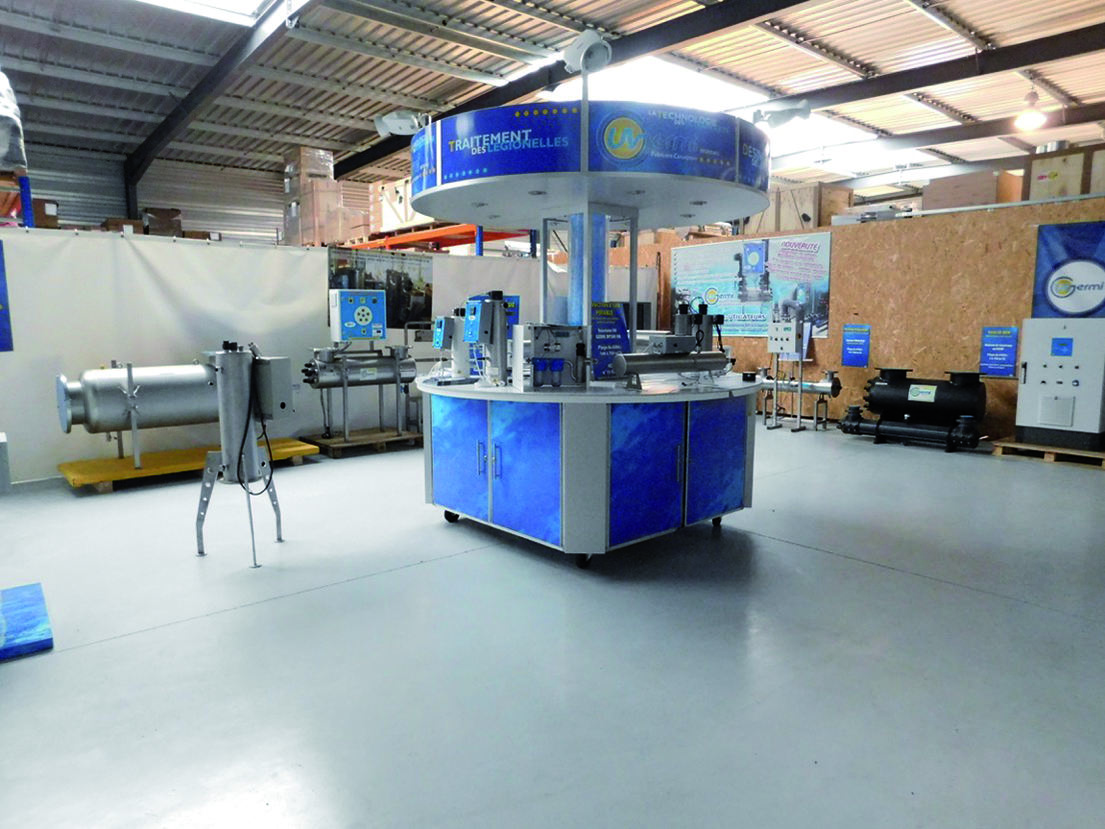UV Germi, a French SME based in Saint-Viance in Central France, is a specialist in ultraviolet disinfection of water, air and surfaces.
UV Germi was created in 2010, employs 30 people and has sales of €4.5m, including 20% on export markets. The company is headed by André Bordas, who aims to increase the proportion of export sales to 40% within three years and to boost growth beyond the 5% reported over the past two years.
The company’s R75 air purifier, which was designed to destroy the H1N1 swine flu virus, is poised to play a major role in achieving these goals. The device was created in 2010 but the level of risk was not sufficiently elevated to justify a full-scale marketing campaign. Prospects have increased over the past 18 months, however, in the face of mounting public and private concerns about deteriorating air quality. Bordas is pursuing discussions to install the R75 in healthcare establishments in the United Arab Emirates about.
The R75, which is made in France in the company’s 2,000m2 factory, caught the attention of Liebherr Aerospace Toulouse, which is the lead company in the Airclean project. UV Germi subsequently joined the project, which is developing cabin air treatment solutions for the aircraft of the future. One of the objectives is to reduce the energy required to draw air from the outside and feed it into the aircraft.
UV Germi’s contribution to the project will be based on the technology of the R75, which will be integrated into the cabin air conditioning system. The R75 has already demonstrated its ability to provide a suitable solution. Tests have shown that its performance is superior to European competitors.
The system uses photocatalysis combined with UV sterilisation to eliminate volatile organic compounds (VOC) and destroy pathogenic agents. As Bordas explains, the air passes through a particle filter before entering a substrate. In the presence of a UV lamp, the substrate releases free radicals which are very effective in destroying VOCs. Micro-organisms are killed and VOCs are transformed into carbon dioxide and water. There are no by-products.
The R75, which is supplied with its own ventilation system, can treat a volume of 100m3 in two hours and its low-pressure UV lamp has low energy requirements. Today it is primarily used in retirement homes, hospitals, clinics and food processing. According to Bordas, it will be “complicated but achievable” to adapt the concept to the aircraft environment, since the R75 is effective across a wide spectrum, including odours, germs, micro-pollutants and viruses.
The company has the resources to adapt the concept, since the workforce includes a doctor in chemistry and physics, and three engineers working on R&D projects. The company invests €300,000 in R&D activities, one-third of which is financed by the Nouvelle Aquitaine regional council.
Ventilation and measurement systems are provided by external suppliers. The primary focus is on reducing the dimensions and flow rate to meet aircraft cabin requirements.

